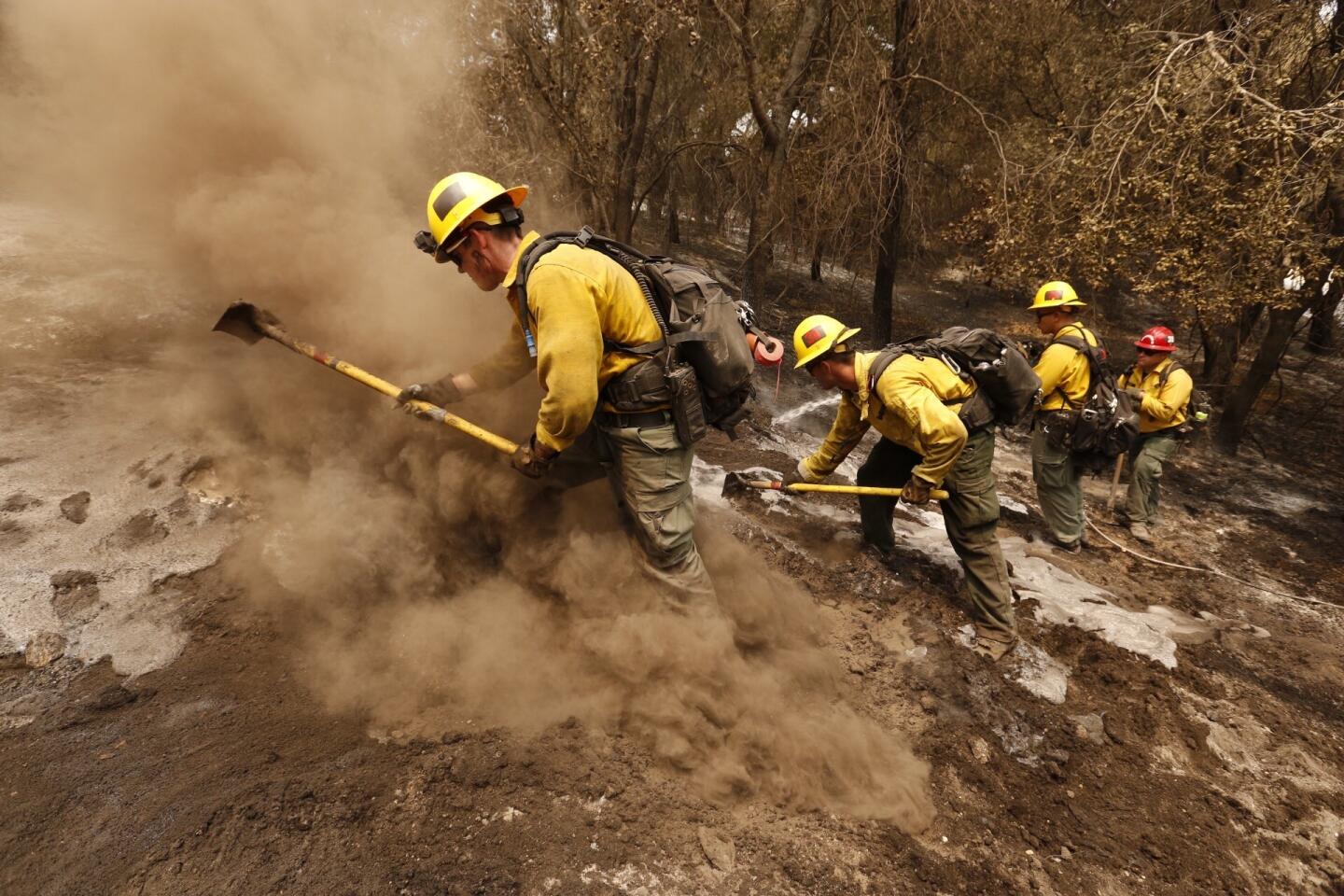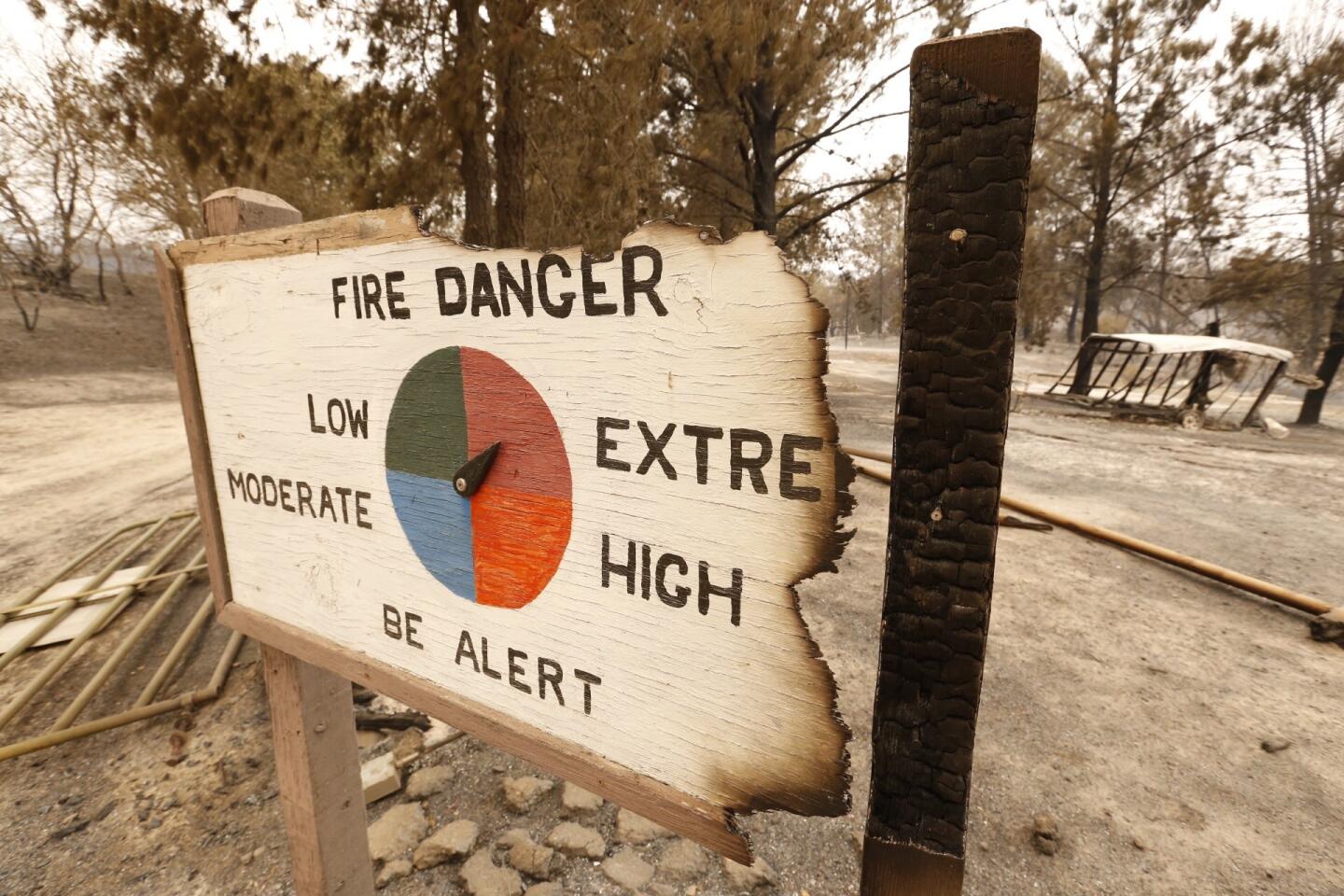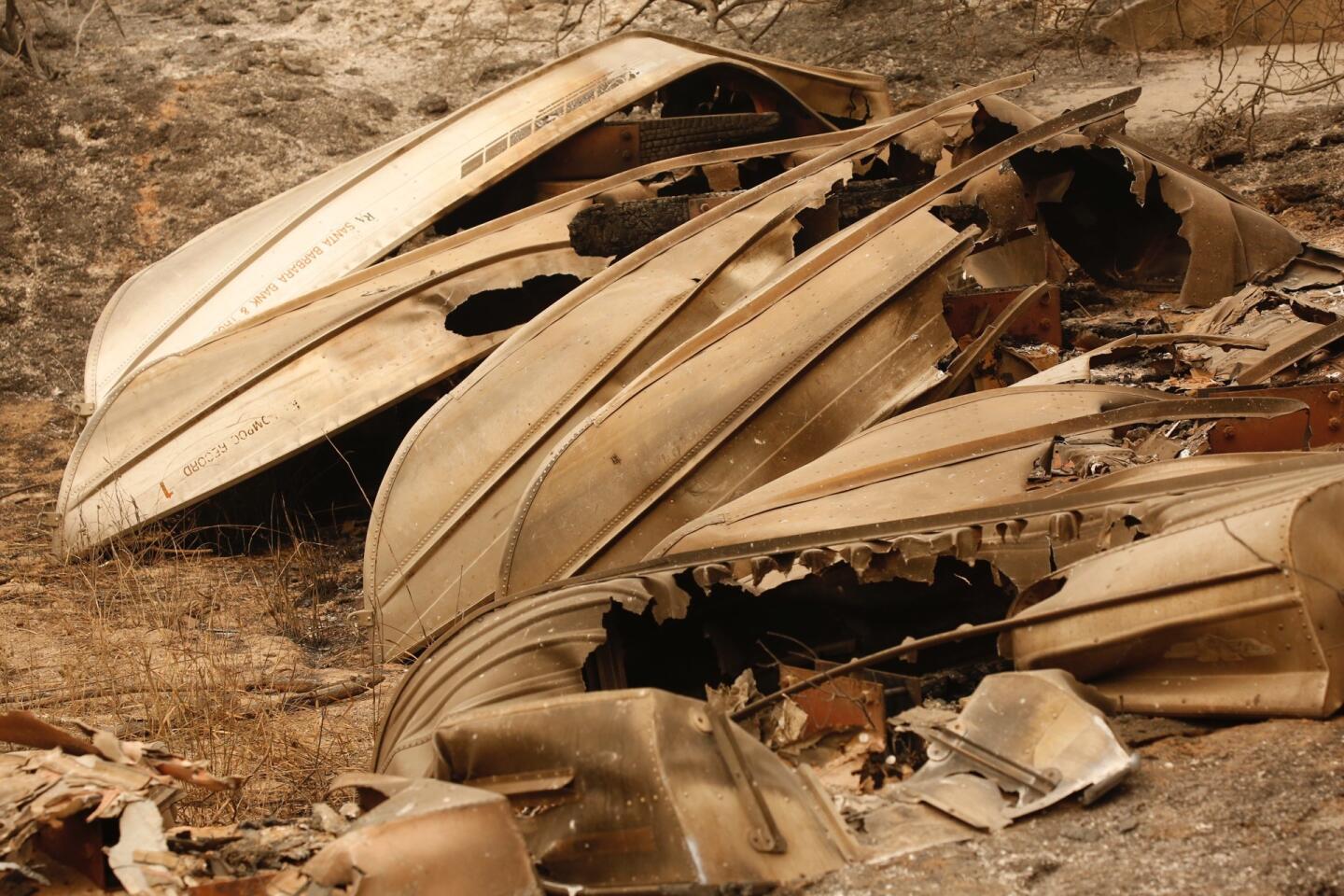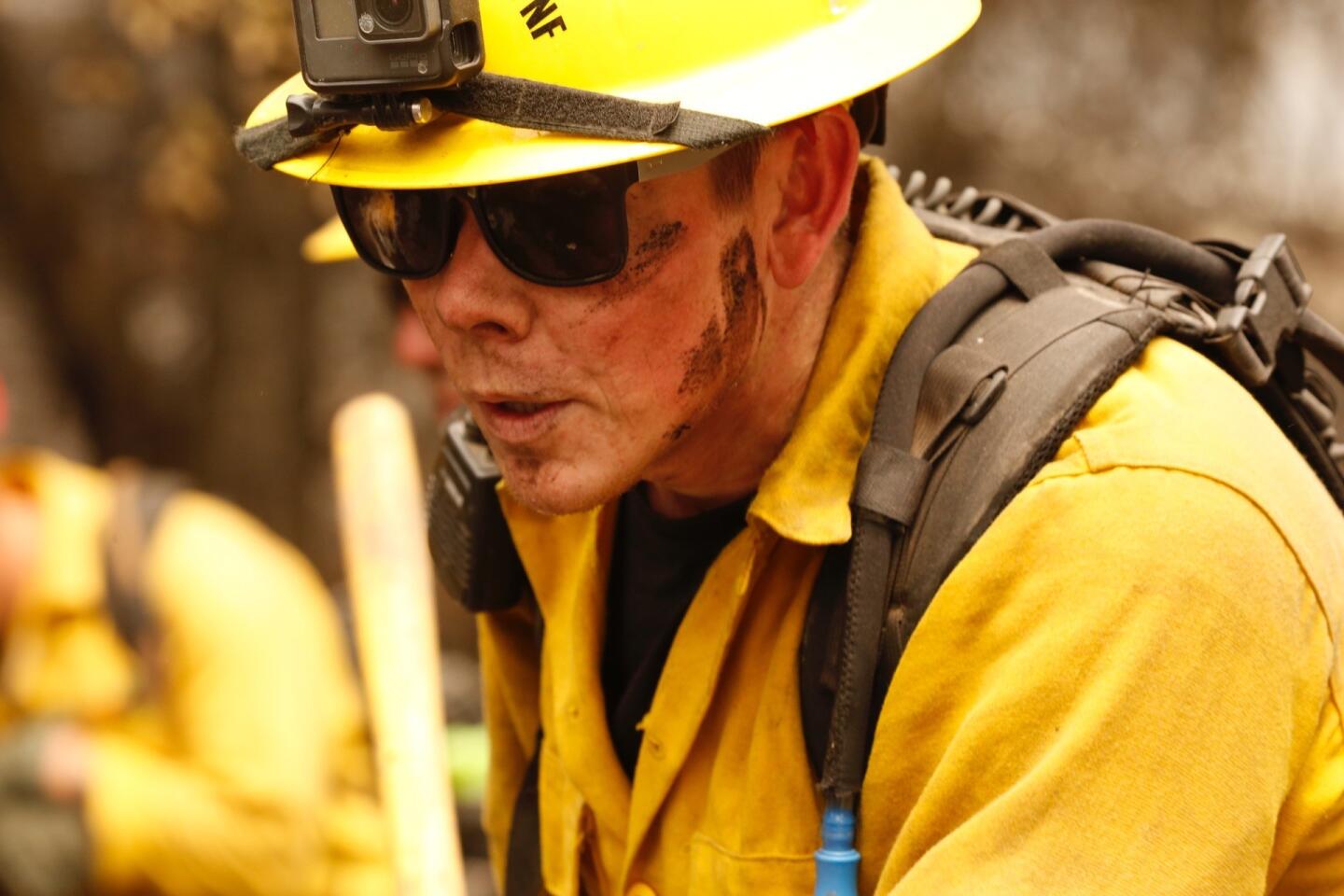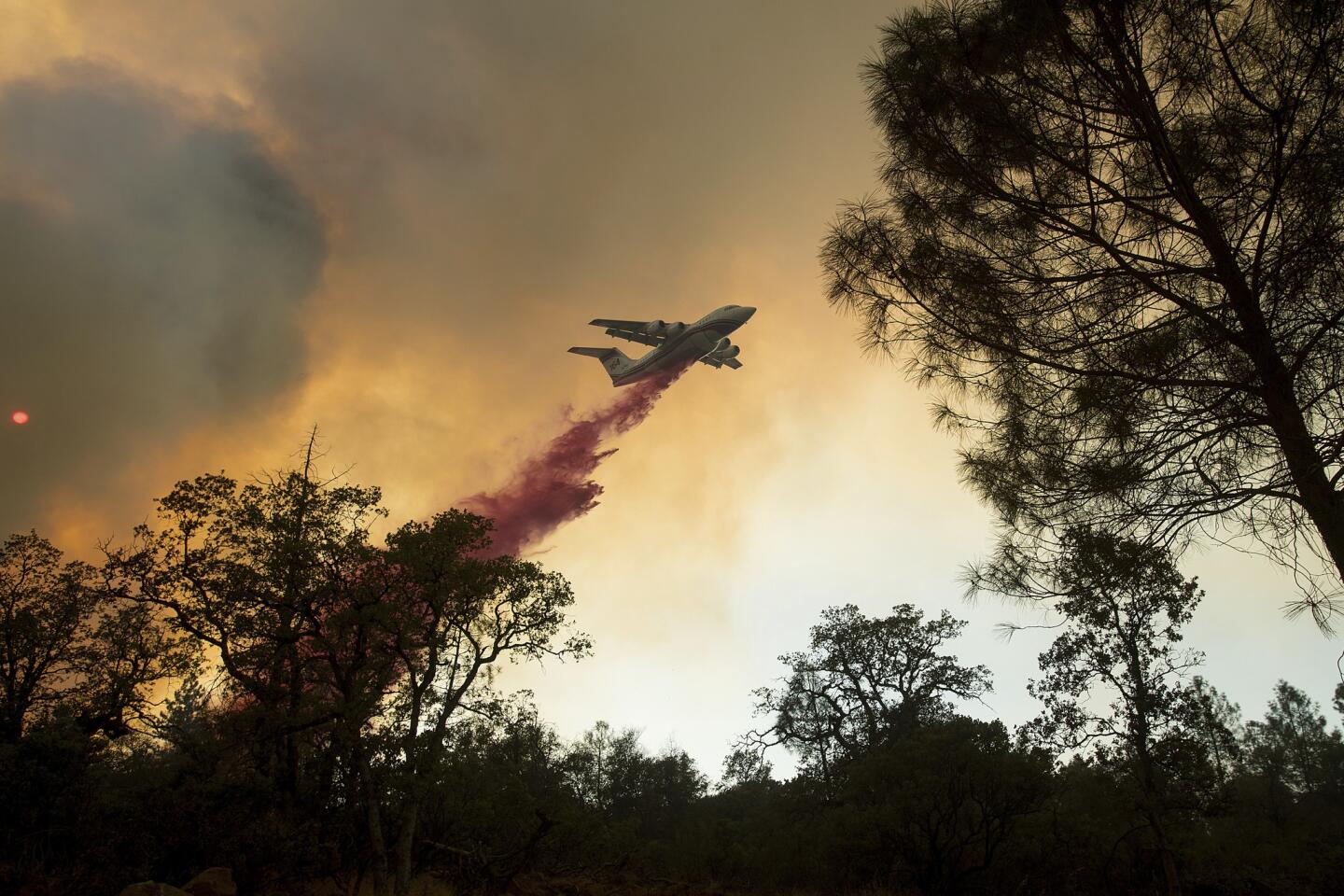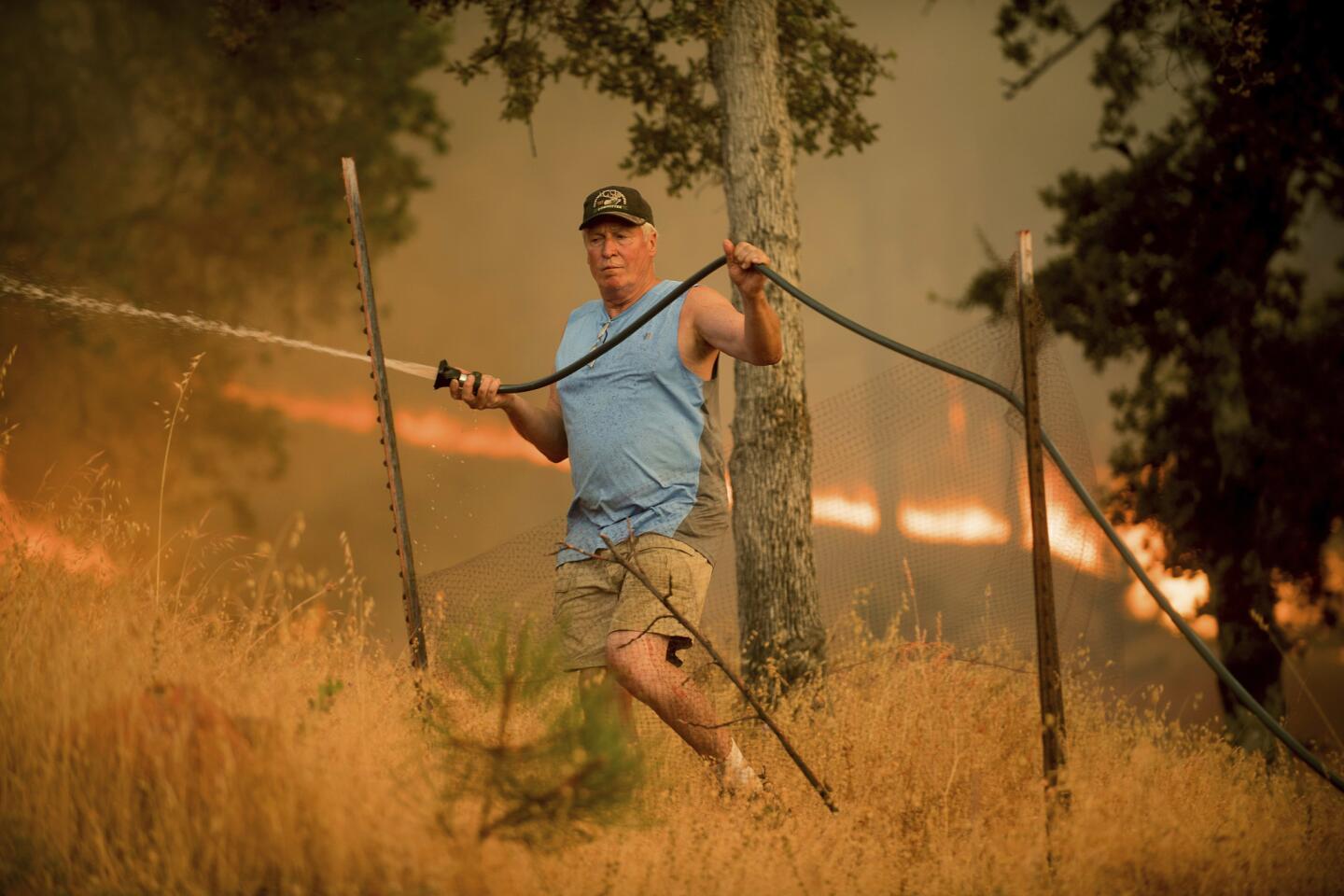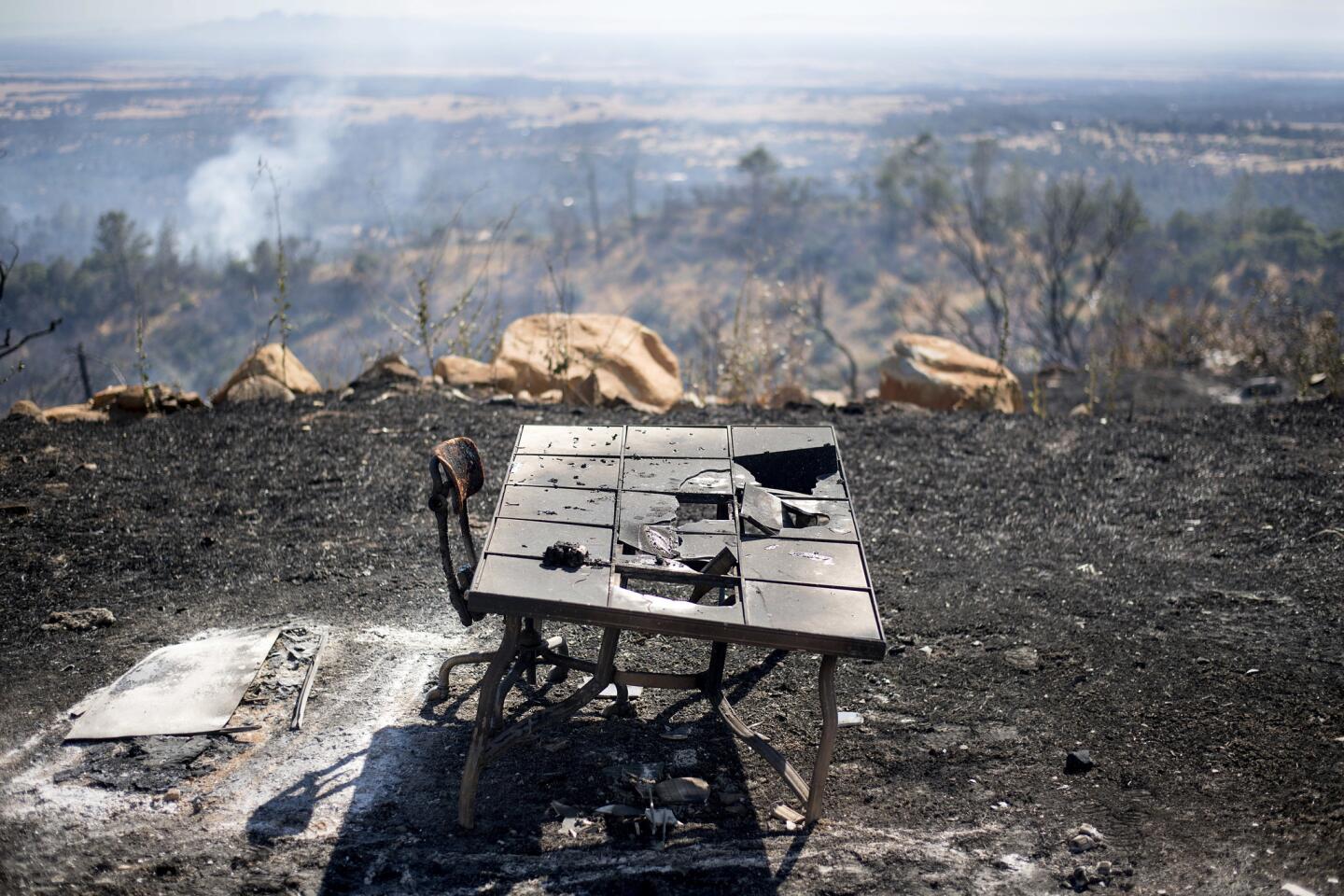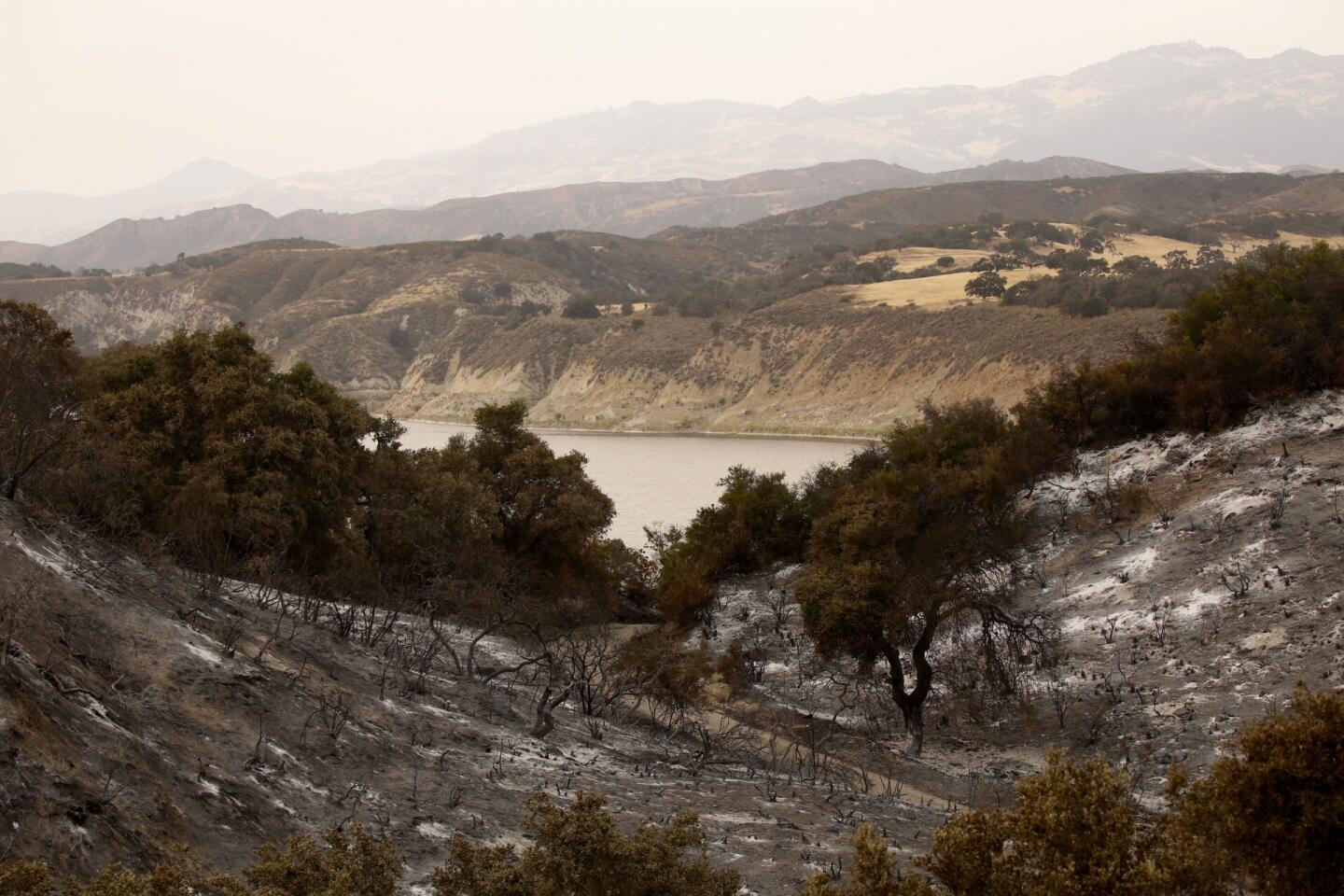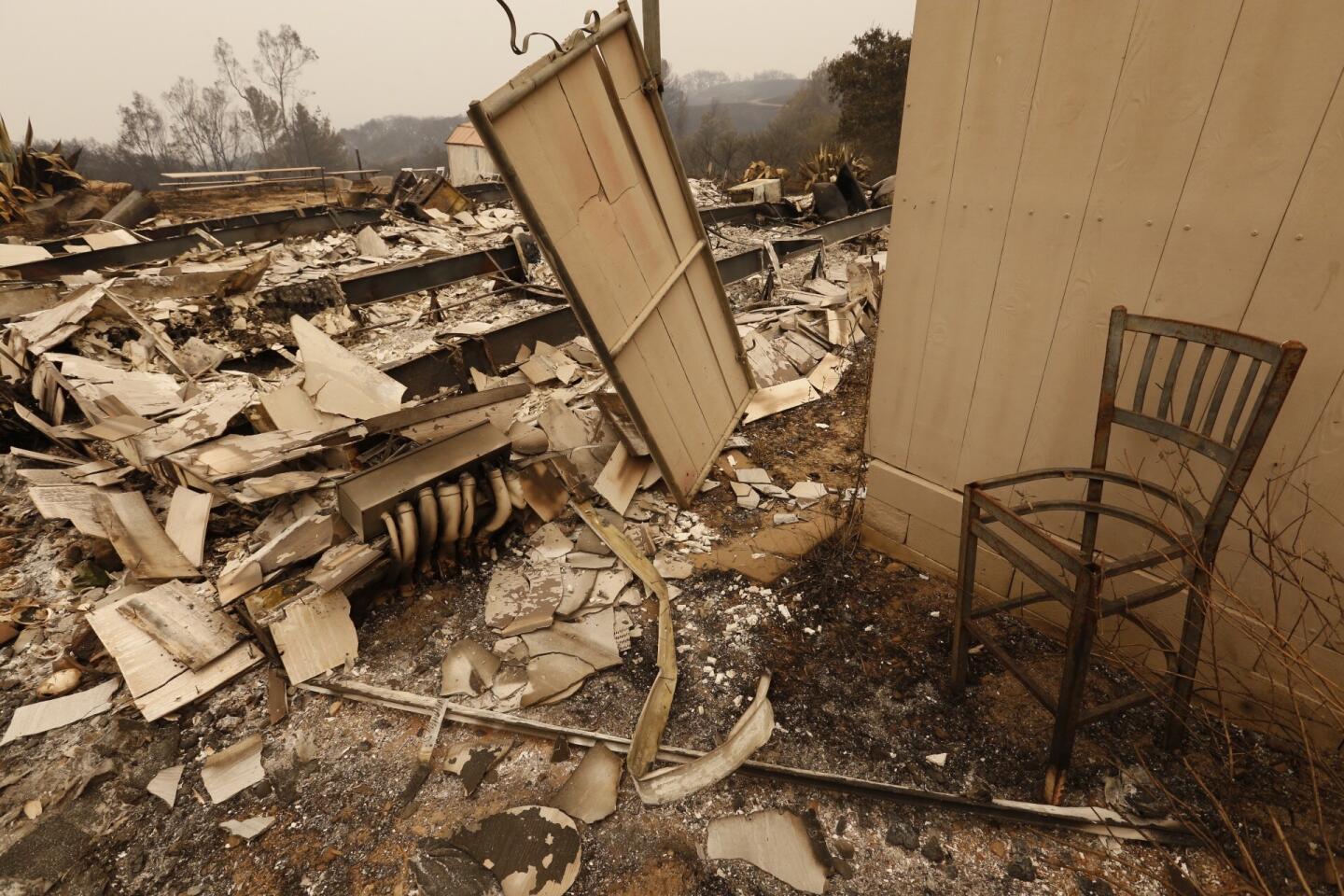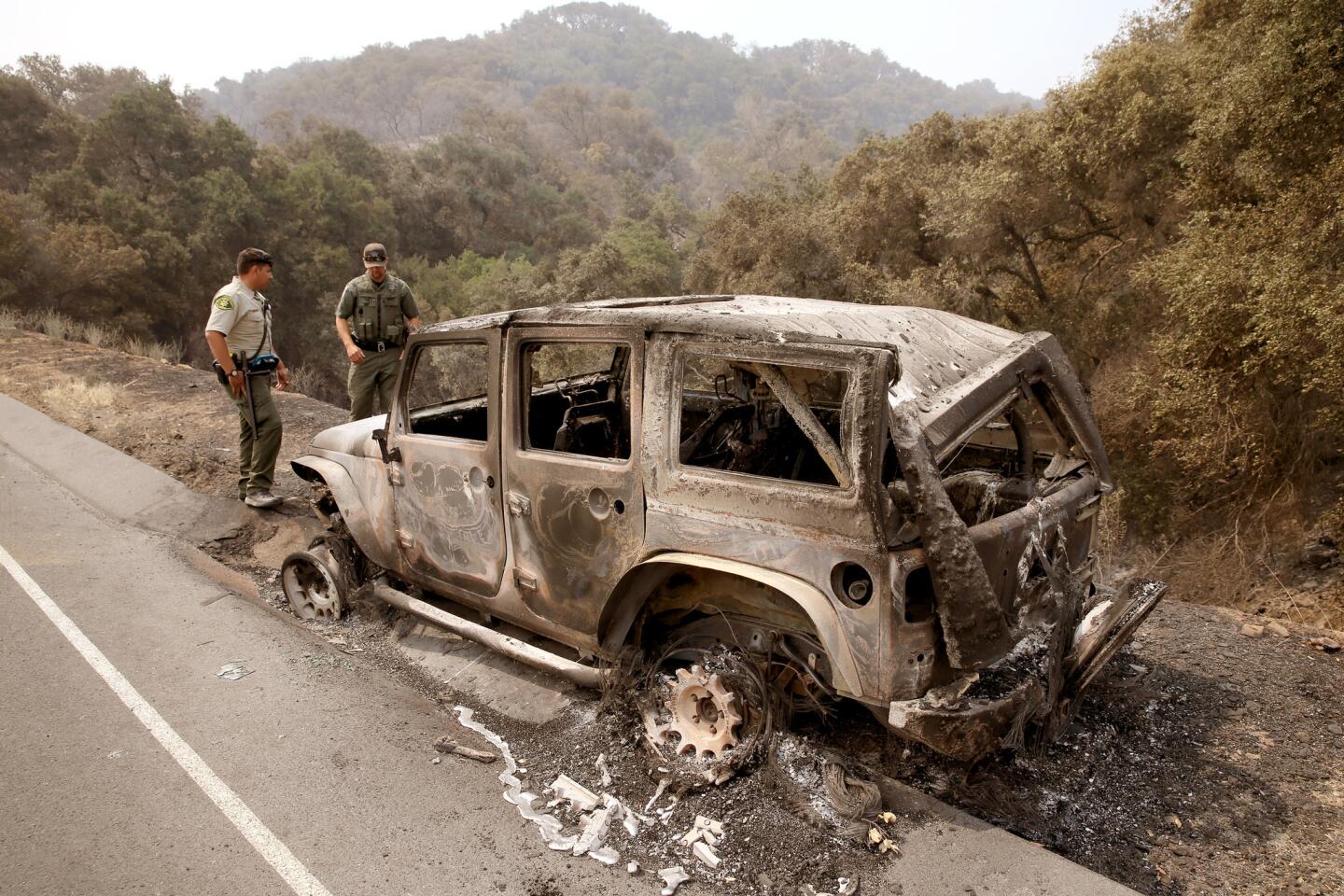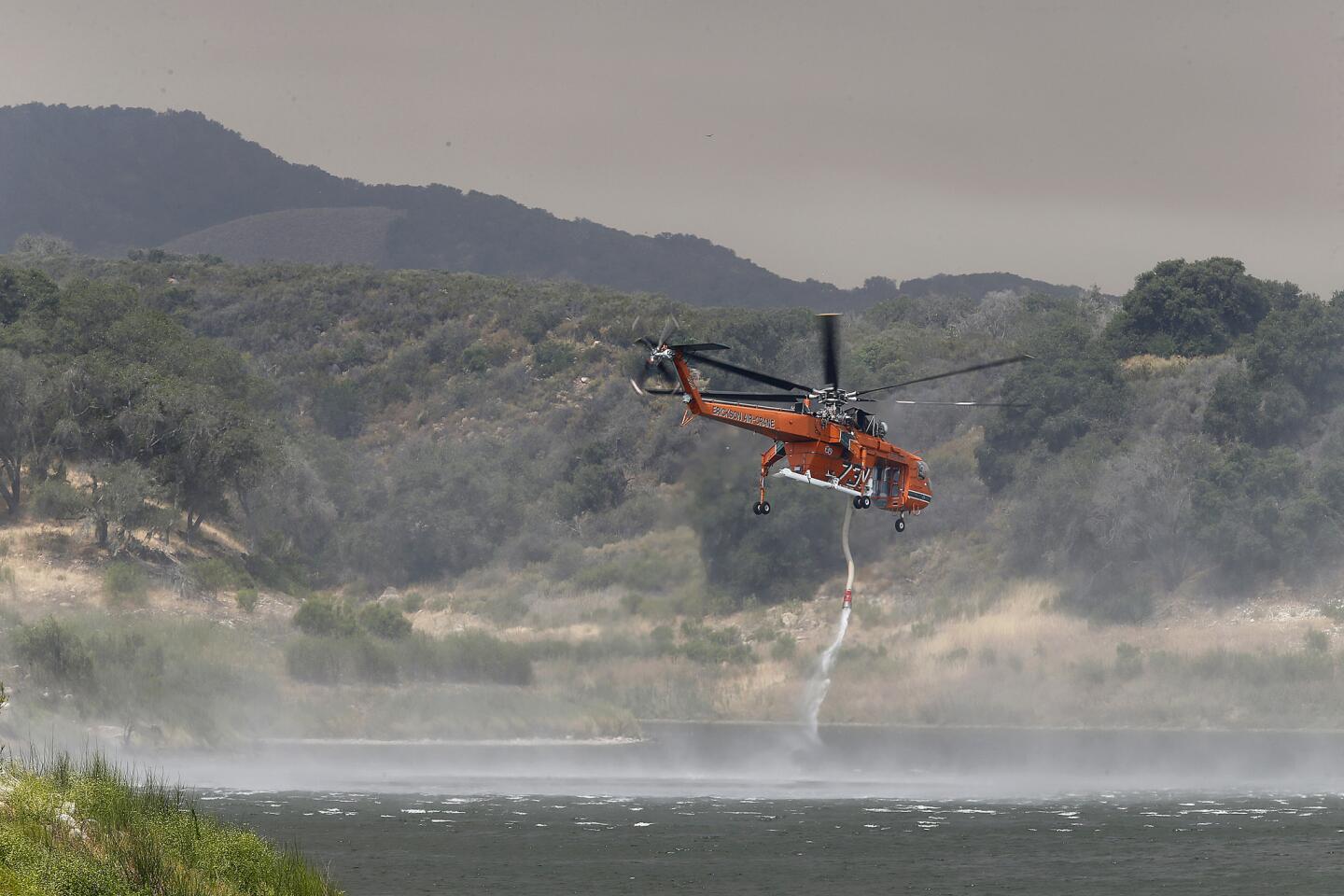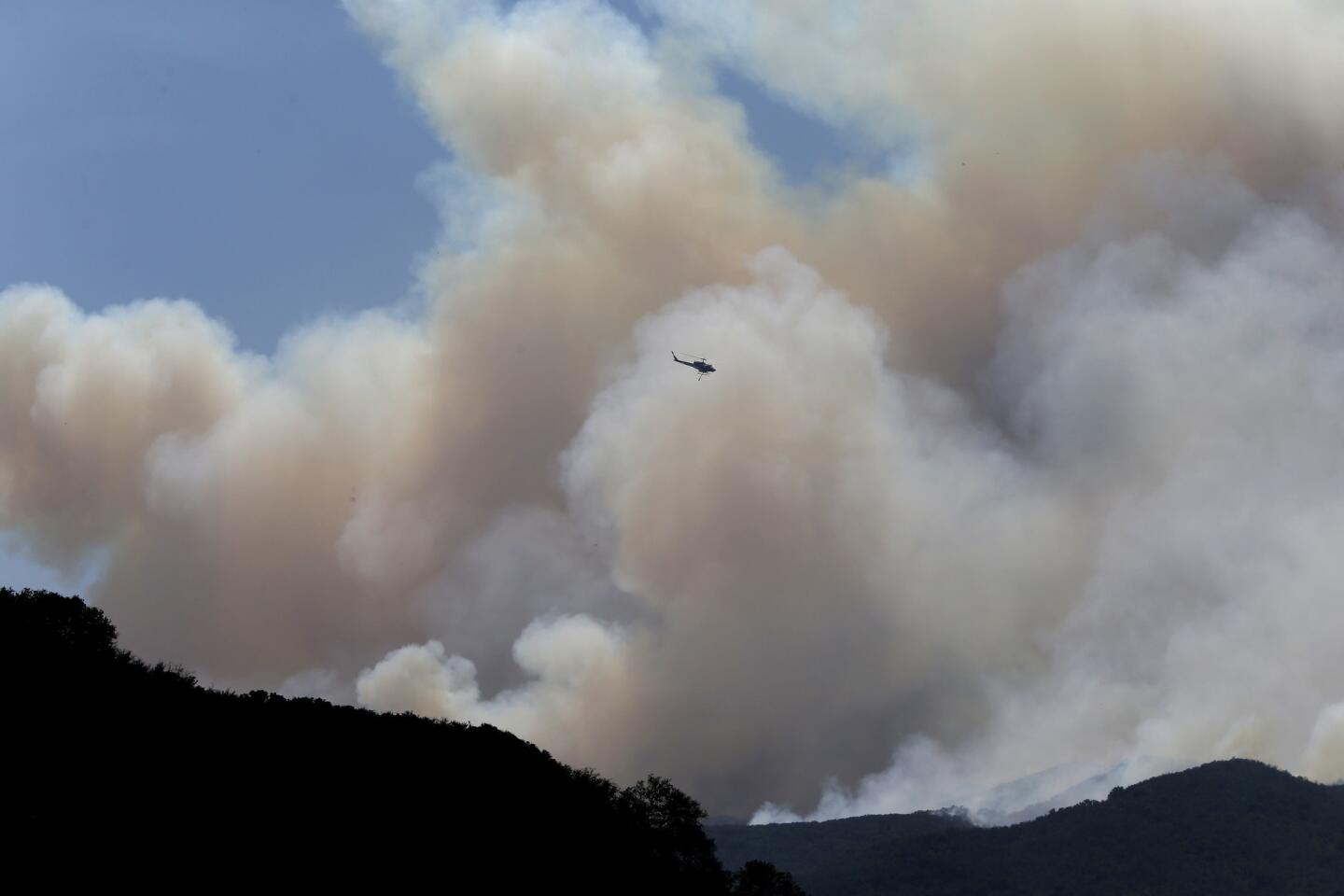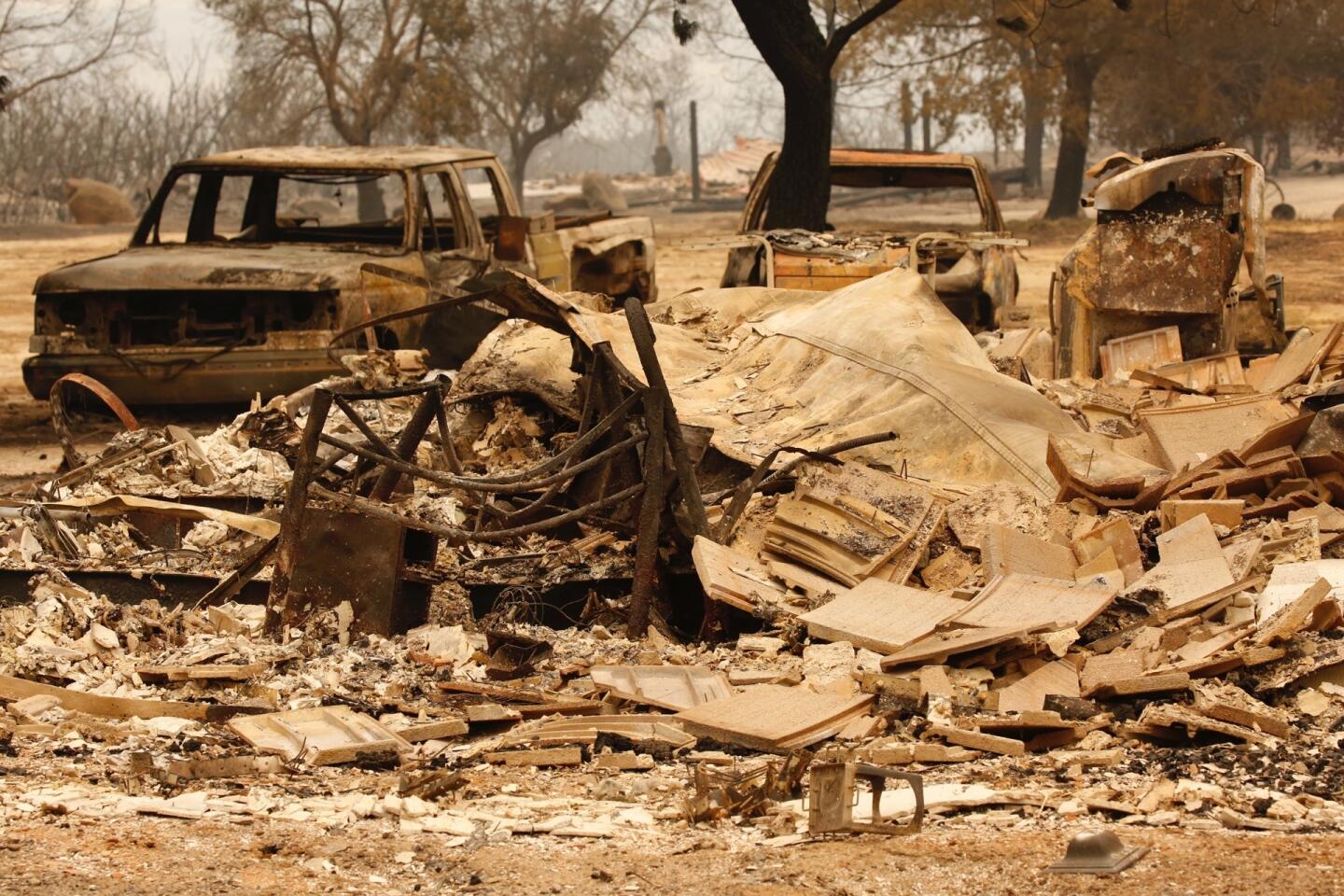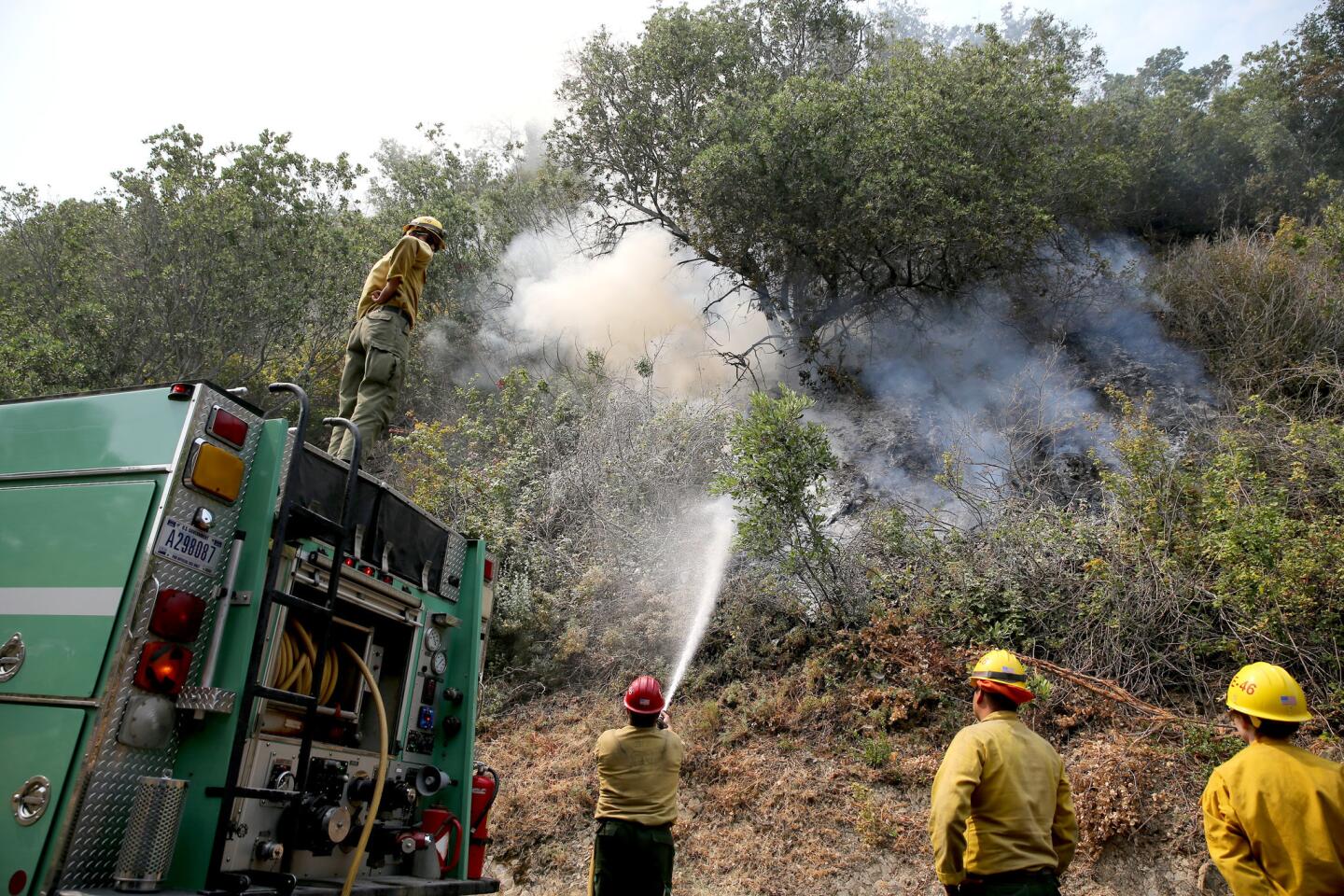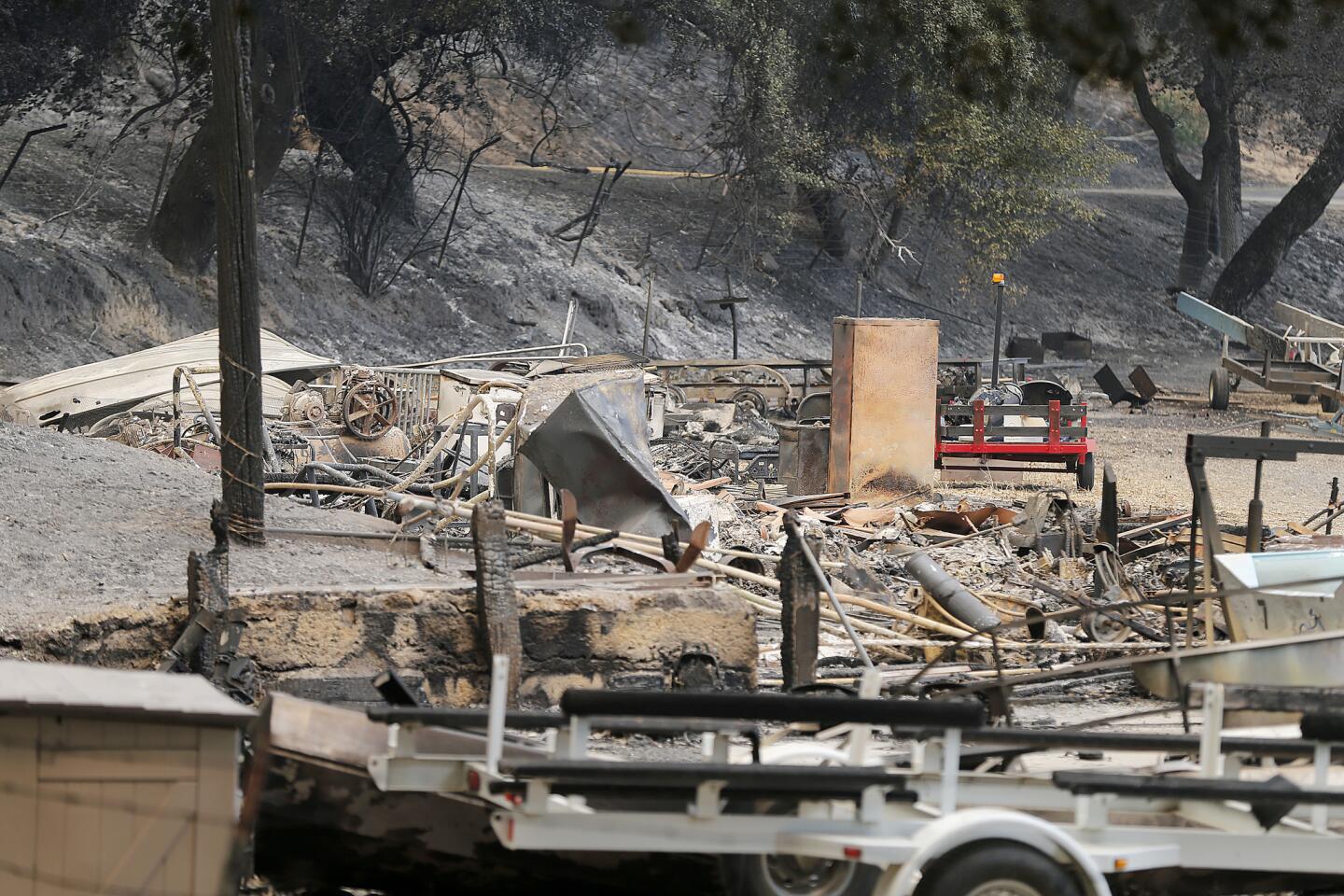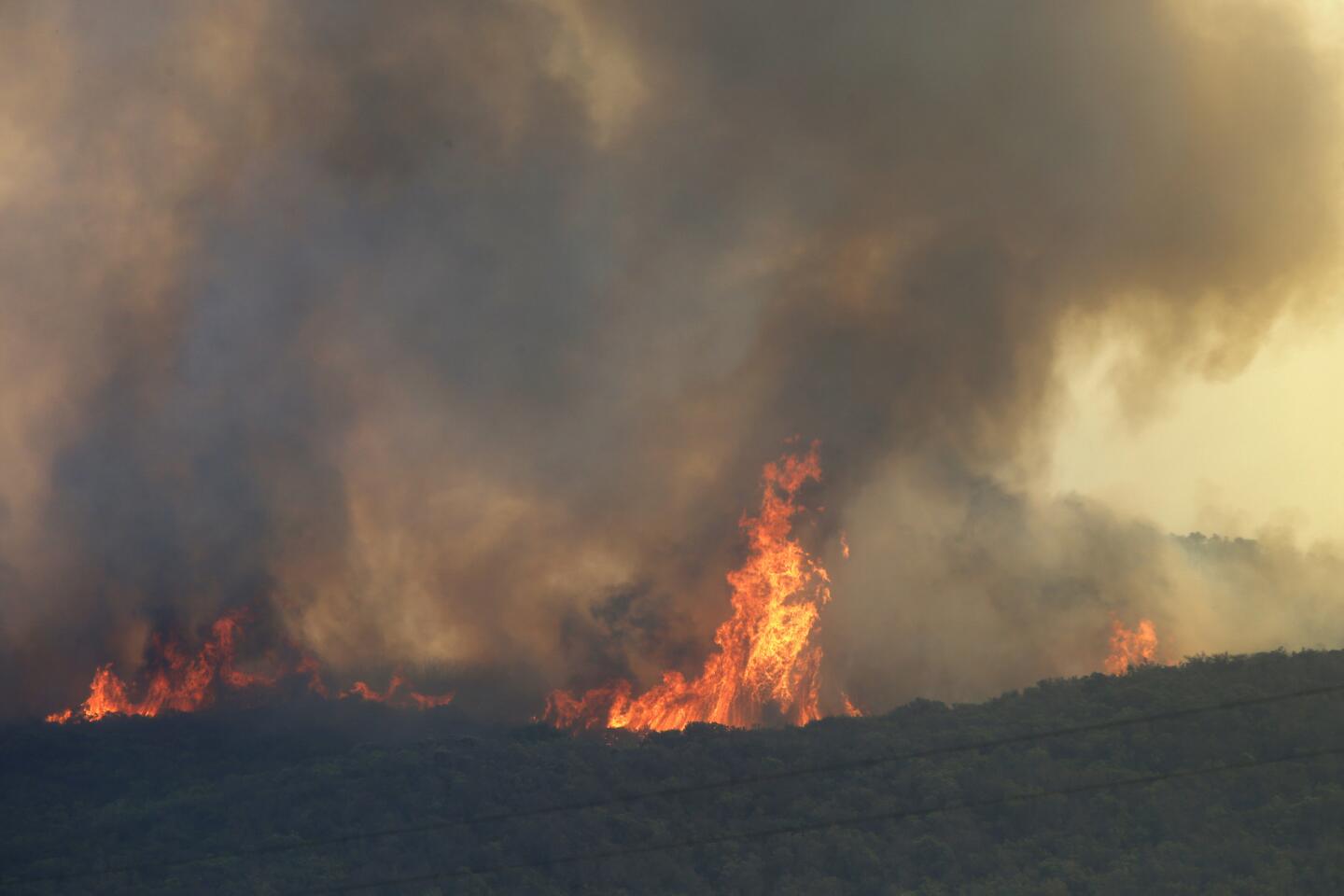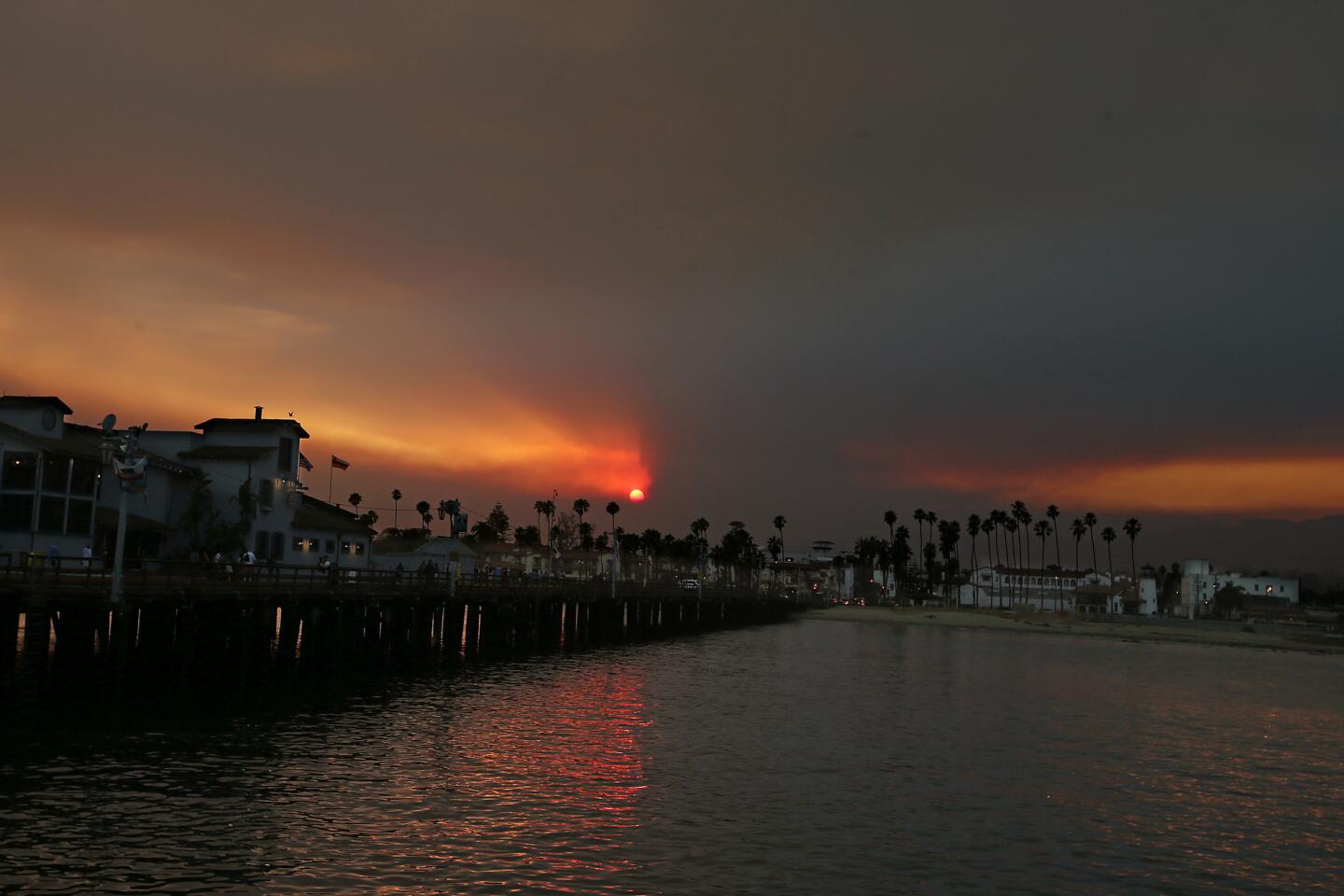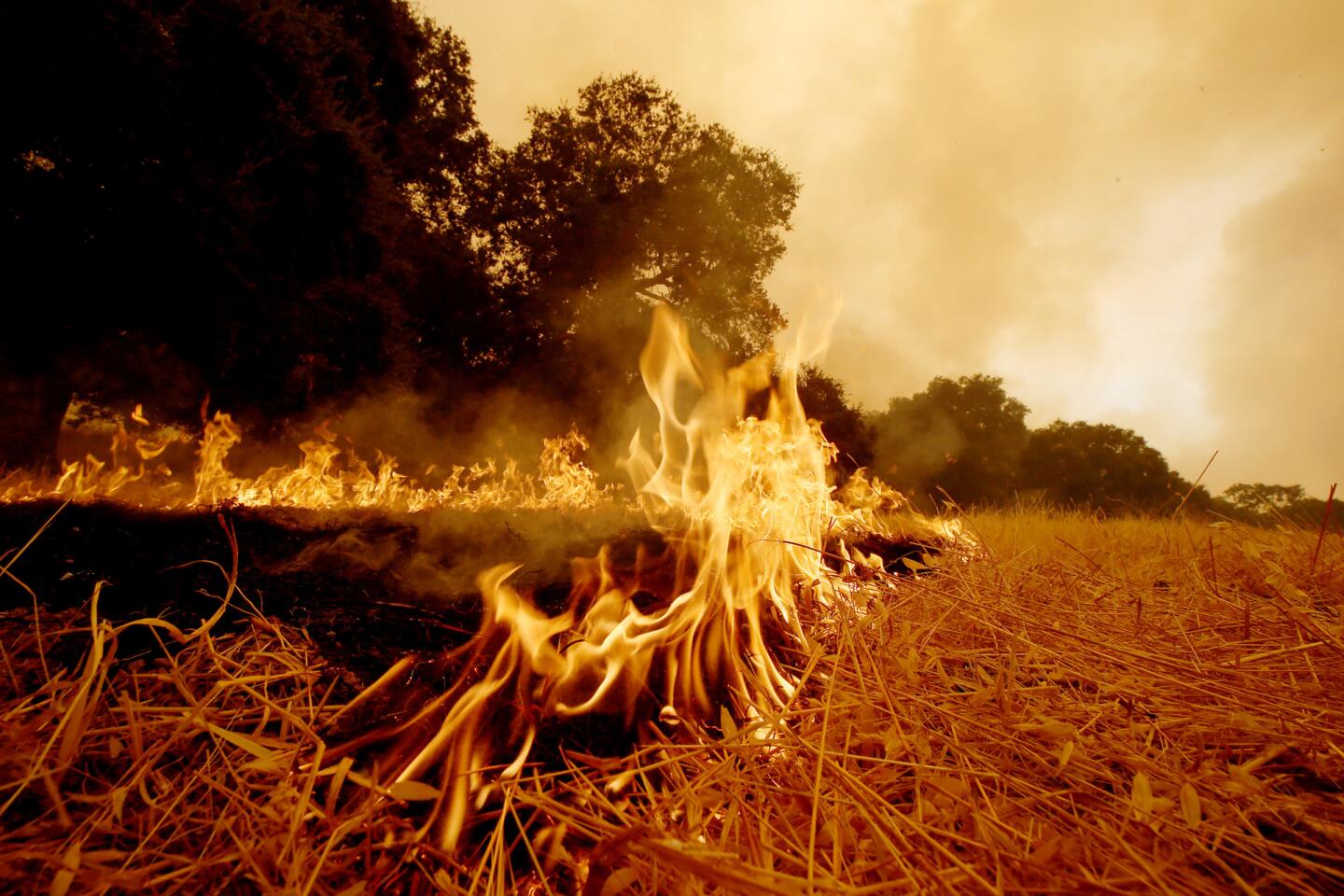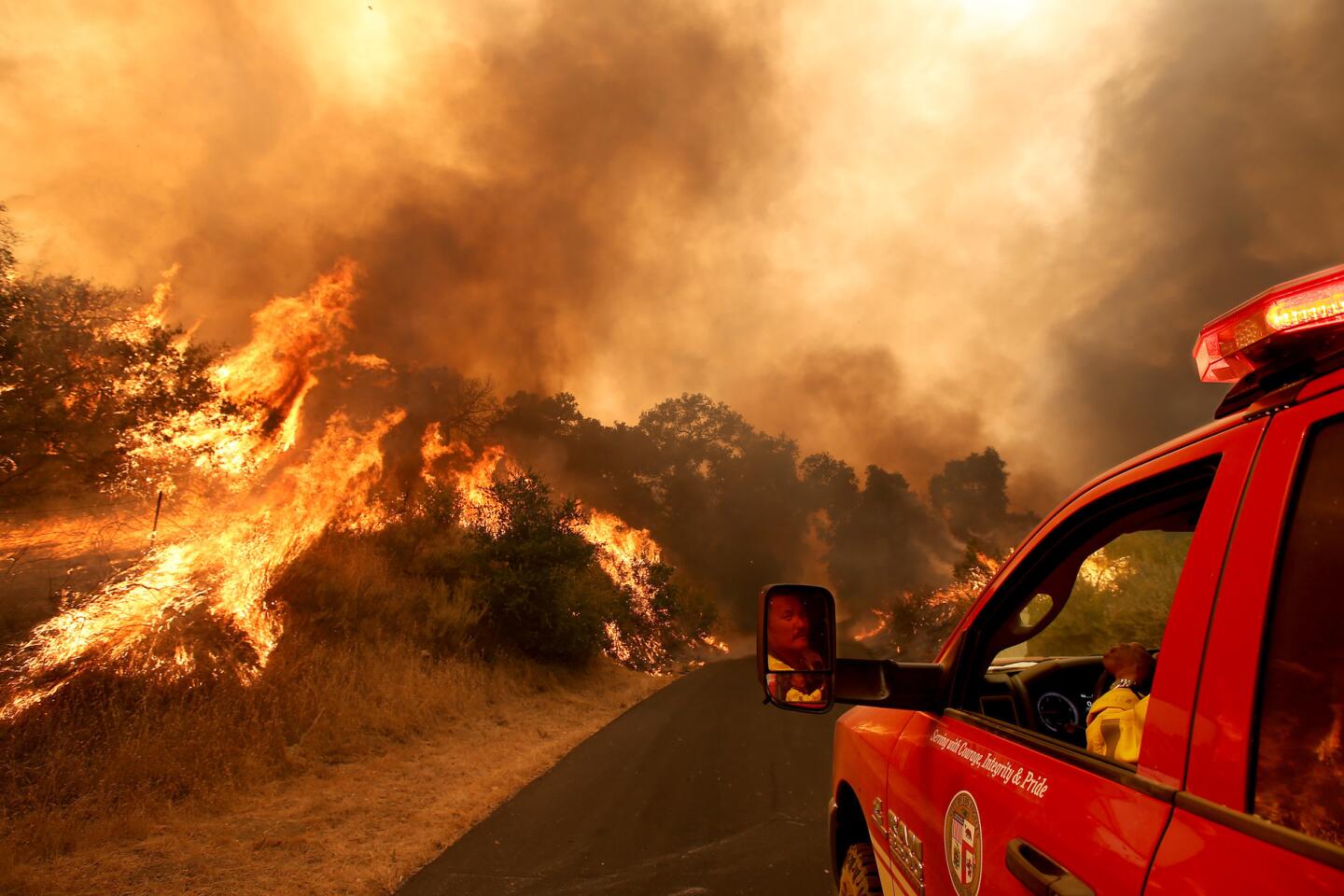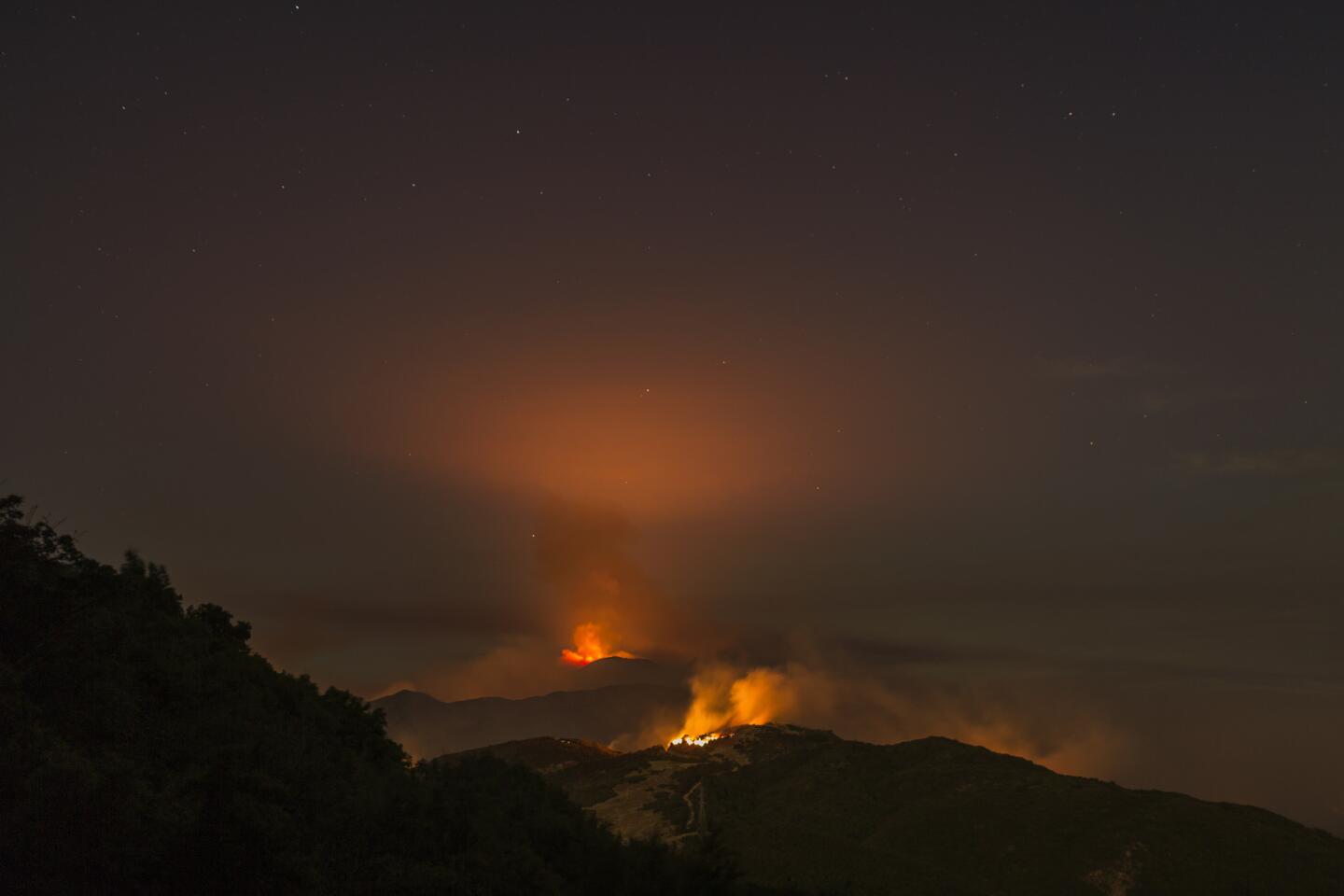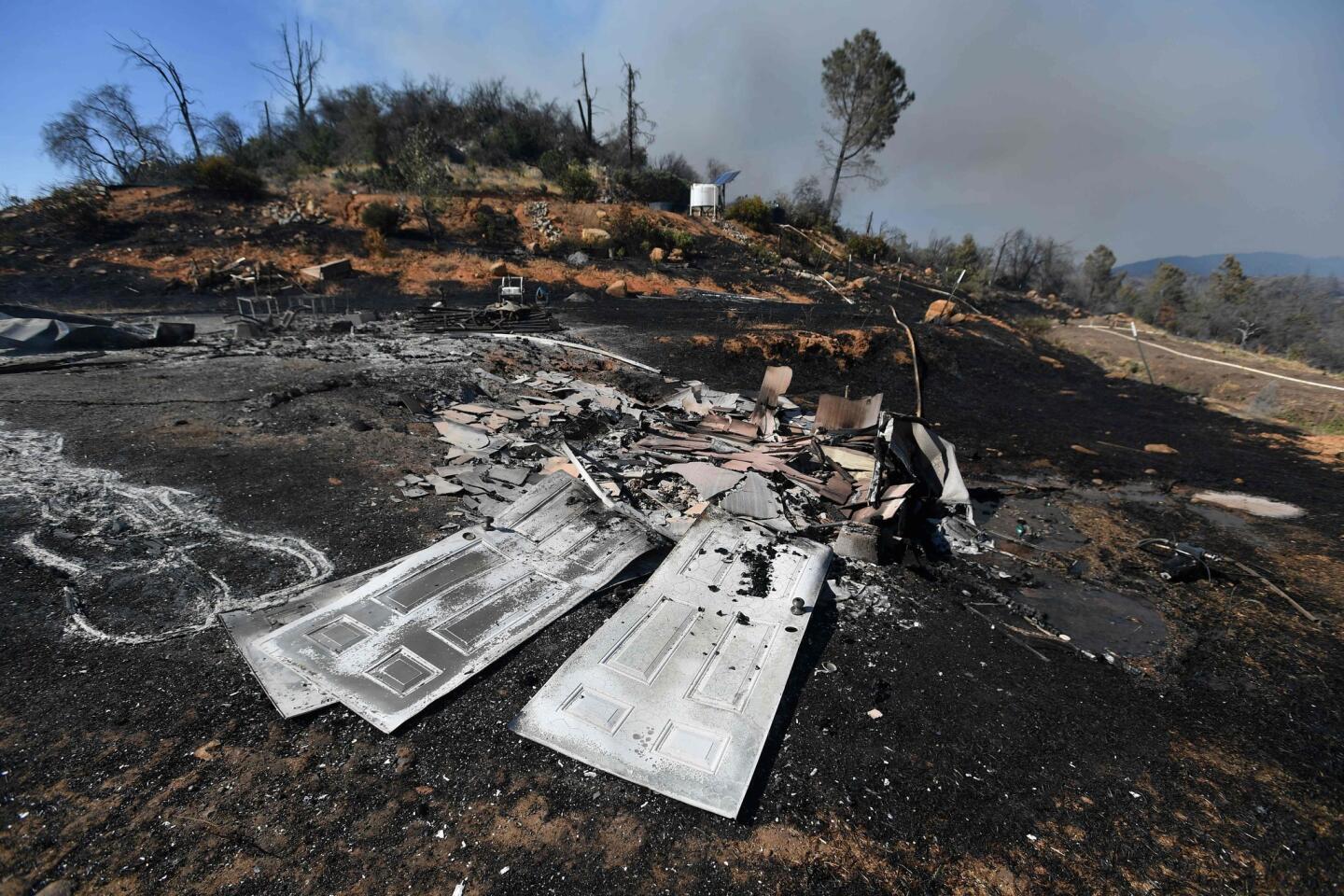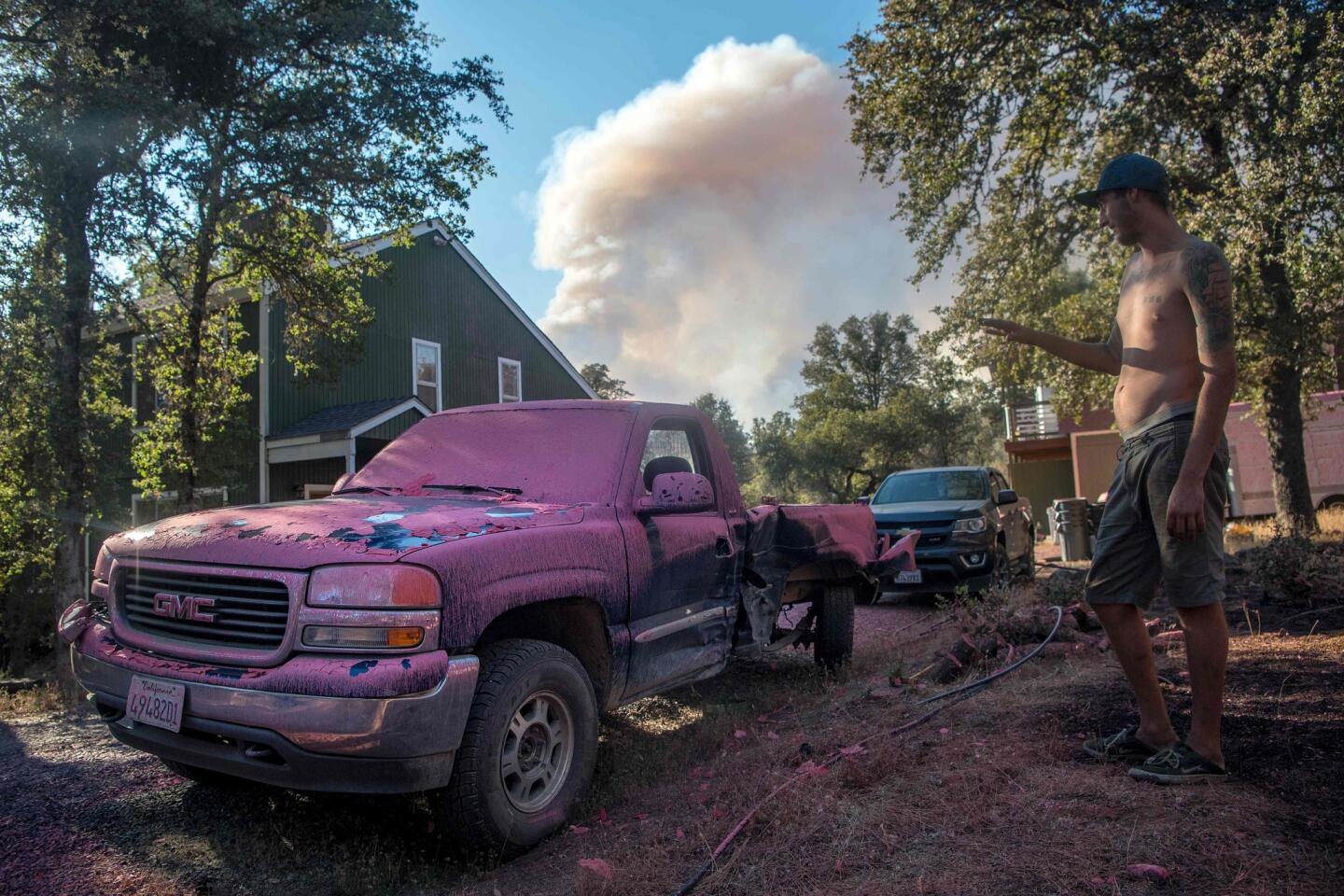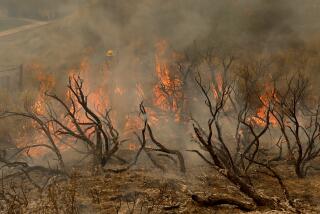California’s wildfire season has begun and you know the drill — or do you?

How bad will this year’s wildfire season be? (July 11, 2017)
Reporting from OROVILLE, Calif. — It’s that time of year, when smoke billows over the backcountry, rural homeowners flee flames and firefighting agencies warn that California is in for another brutal wildfire season.
During the state’s long drought, firefighters repeatedly said withered landscapes portended plenty of big burns. Now, after a drought-busting winter, they are predicting a bad fire season because all that wet weather produced a bumper crop of grass and new growth that blanketed the mountains and foothills with more fuel.
Both perspectives are legitimate. But neither situation guarantees a bad year on the fire lines, most experts agree. Just look at Southern California, which experienced several mild wildfire seasons during the drought despite pitiful rainfall and shriveled chaparral.
Why? Because the dry, hot Santa Ana winds that have historically driven the region’s most devastating wildland fires didn’t blow much, or didn’t blow when somebody or something started a fire.
“There’s always going to be vegetation,” said Richard Halsey, director of the California Chaparral Institute. “You’ve got to have the right combination of people doing stupid things on a hot day, an ignitable source of fuel and the winds.”
Dozens of small grass and brush fires may break out over a hot summer weekend statewide, and firefighters knock most of them down quickly.
This weekend, despite scorching temperatures, they contained the majority of the 20 more significant wildfires at a few thousand acres.
The exceptions were the Alamo and Whittier fires on the Central Coast, the Wall fire in Butte County, the Garza fire in Fresno County and the lightning-caused Schaeffer fire north of Kernville.
The Wall fire, which charred 5,800 acres and destroyed 37 structures near Oroville, slowed Monday.
“It’s difficult to say how it is going, because it encompasses such a large area, but the acreage hasn’t increased in 24 hours,” said Gabe Lauderdale, a Cal Fire public information officer.
On Saturday morning, Leanne Beck and her husband, Mike, stood at the top of their property and watched bulldozers cut a fuel break around the eastern edge of the fire, which was burning in oak woodlands carpeted with 2 1/2-foot-tall grass.
They had moved into their double-wide on 40 acres near Lake Oroville in 2013, while smoke still hung in the air soon after the state made a stand against the Swedes Flat fire by lighting a backfire near their property line.
In the ensuing four years they cut brush and did their best to remove dead trees, building a defensible space. They felt prepared. So they had stayed put Friday when Butte County deputies drove through with loudspeakers and ordered evacuation of a large swath of mountain land off Chinese Wall Road.
By Saturday afternoon their confidence had waned. When they saw the ridge explode in flames, they packed up their dogs and left.
Monday morning at the Red Cross evacuation shelter in Oroville, Beck stood stunned by the news that a weeping neighbor drove to town to deliver. Their home was a pile of cinders.
“I feel like I’m 102 right now,” said Beck, a 60-year-old retiree whose husband still works at a software job. “We’ve been sitting here for three days, not knowing, and now, you don’t want to know.”
Some 115 people remained at the Oroville shelter Monday, some watching the Wall fire’s progress from the parking lot.
Beck’s eyes began to water but she blinked back tears. She talked about taking a trip to visit her grandchildren, and laughed at what she and her husband had grabbed when they left their house for the last time.
It was a weed whacker, still boxed, and too late to put to work.
Her thought at that moment: “Maybe I can return this.”
With the blaze 40% contained Monday evening, it still threatened 5,400 homes. Thousands of Butte County residents remained under evacuation orders not far from where people were forced from their homes last winter when damage to Lake Oroville’s spillways threatened to unleash a wall of water.
“We have a joke about Oroville,” said Red Cross shelter manager Pam Deditch, a local resident who normally works as a behavioral health counselor for the county. “Here, it’s hell or high water.”
Four hundred miles south, near Santa Maria, the 29,000-acre Alamo fire snaked south through Tepusquet Canyon over the weekend, where dozens of houses are perched in the hills and cows graze on wide green pastures.
Curtis Tunell, 73, a retired roofing contractor, and his wife, Linda, 67, returned to their home Monday afternoon to check on their two horses and two dogs. Their house was untouched by the flames. “It was pretty dicey there for a while,” Tunnell said, pointing at the charred hillside nearby.
The 11,000-acre Whittier fire was burning in a mix of oak woodland and chaparral on both sides of Highway 154 south of Lake Cachuma in Los Padres National Forest, which has been hammered by wildfires during the last decade.
Halsey, of the Chaparral Institute, said he was particularly concerned because it appeared the flames were moving into areas that had escaped the other blazes. “There’s a treasured landscape of old-growth chaparral. And there’s so little left of it. It’s a habitat that provides sources of food and shelter.”
Moreover, if chaparral and sagebrush burns too often, it won’t regrow and will turn into a landscape of highly flammable grasses that are dry most of the year.
“One of the changes that’s happened over the last two decades [in Southern California] is more and more conversion of chaparral and particularly sage scrub into annual grasslands,” said Phil Rundel, a professor of ecology at UCLA.
Max Moritz, a wildlife specialist with UC Cooperative Extension, says this year may provide a lesson in what happens with dramatic swings between wet and dry, as is expected to occur more frequently with climate change.
Deep soil moisture levels haven’t necessarily recovered from the drought, which included the driest four-year period in the state’s record. That, Moritz said, could mean vegetation dries out earlier in the fire season than would be expected after plentiful rains.
“Just because we had a relatively wet winter we may still see the ghosts of the last several years of drought play out,” he said.
Twitter: @paigestjohn
Twitter: @boxall
St. John reported from Oroville and Boxall from Los Angeles. Times staff writer Meg Bernhard in Santa Maria contributed to this report.
ALSO
Wildfires across California destroy more than two dozen homes
‘I think it’s arson’: Developer suspects political motives as officials probe latest Bay Area fire
Woman arrested after dog dies, other pets left in 113-degree car in Ontario, authorities say
UPDATES:
10:00 p.m.: This article was updated to include the information that 37 structures have been destroyed by the Wall Fire near Oroville.
More to Read
Sign up for Essential California
The most important California stories and recommendations in your inbox every morning.
You may occasionally receive promotional content from the Los Angeles Times.
